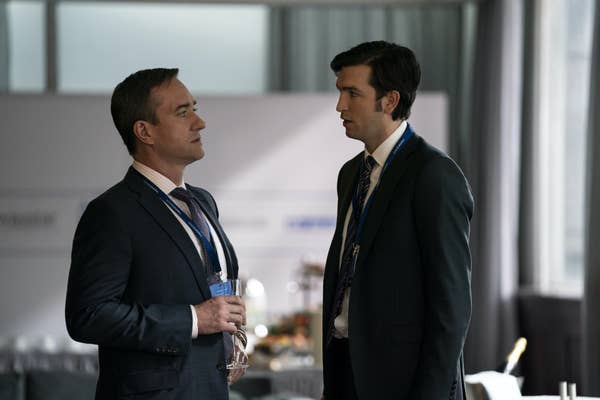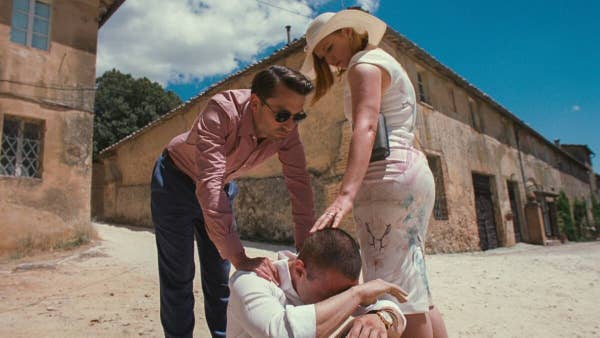
Television has evolved into a dynamic medium capable of reflecting the intricate dance between power and dysfunction in our society. A prime example of this is HBO’s “Succession,” a series that intricately weaves the lives of the Roy family, media moguls wrestling with their own demons amid corporate intrigue. Jesse Armstrong’s creation not only draws parallels with real-world counterparts, such as the Murdochs, but utilizes specific scenes to illuminate the broader impacts on audiences and societal discourse.
Parallels with the Murdochs and Reality
“Succession” unfolds as a riveting exploration of power dynamics within a media empire, mirroring the legacy of the Murdoch family. The patriarch, Logan Roy, bears an uncanny resemblance to Rupert Murdoch, the media tycoon behind News Corporation. The scenes where Logan strategically outmaneuvers his own children, particularly in the shareholder meeting in Season 1, Episode 10, echo the legendary corporate maneuvers that have defined the Murdoch family’s legacy. The calculated ruthlessness, intricate power plays, and familial tensions depicted in the series reflect the real-world complexities of media dynasties.
Moreover, the show artfully captures the interplay between media ownership and political influence, a theme synonymous with the Murdoch family. Scenes such as Kendall Roy’s congressional hearing in Season 2, Episode 3, resonate with the real-world scrutiny faced by the Murdochs and their media outlets. The blurred lines between media magnates and political power become glaringly evident, providing audiences with a captivating reflection of the symbiotic relationship between media empires and political landscapes.

In “Succession,” the Roy family operates within the fictional media conglomerate Waystar Royco. The show intricately explores the dynamics of power, corporate maneuvering, and the complexities of familial relationships. Similarly, Fox News, owned by the Murdoch family, is a real-world media giant known for its influence on conservative politics. The Murdochs’ control over the network and their strategic decisions reflect a real-world parallel to the power dynamics depicted in the show.
Family Influence:
The Roy family in “Succession” mirrors the Murdoch family’s influence over their media empire. Both families have faced questions about the concentration of power within a family unit and the impact on corporate governance. The portrayal of family dynamics in “Succession” sheds light on the potential pitfalls of nepotism and the challenges of balancing personal relationships with professional responsibilities—themes that resonate with the Murdoch family’s real-world experiences.

Media and Politics:
“Succession” explores the blurred lines between media ownership and political influence, showcasing how media can shape public opinion and political narratives. Fox News, as a real-world news network, has been criticized for its perceived political bias and influence on conservative politics. Both the show and the network raise important questions about the responsibilities of media organizations, the potential for bias, and the impact of media on the democratic process.
Corporate Culture:
Scenes in “Succession” often highlight the toxic corporate culture within Waystar Royco, emphasizing issues like workplace misconduct, ethical lapses, and cutthroat competition. While the show is fictional, it draws attention to broader concerns about corporate practices. Fox News, too, has faced scrutiny for its workplace culture, with allegations of harassment and biased reporting. The intersection of power, influence, and corporate culture is a shared theme that resonates in both the fictional and real-world contexts.
Narrative Manipulation:
“Succession” delves into the world of narrative manipulation within the media landscape. Fox News, with its conservative slant, has been accused of shaping narratives to align with its political agenda. The show’s portrayal of media manipulation serves as a fictional exploration of real-world concerns about the role of media in shaping public perception and influencing political discourse.

While “Succession” is a work of fiction, its exploration of power dynamics, media influence, and family complexities provides a lens through which to analyze real-world media entities like Fox News. By drawing parallels between the fictional and the actual, viewers can engage in critical reflections on the nature of power, media responsibility, and the impact of influential families on the socio-political landscape.
Impact on Audiences
The impact of “Succession” on audiences is palpable, with specific scenes serving as emotional touchpoints that resonate beyond the screen. The intimate family therapy session in Season 2, Episode 8, lays bare the emotional toll of familial dysfunction, inviting viewers to draw connections between the Roys and the Murdochs. The show’s ability to humanize its characters, despite their opulent surroundings, prompts viewers to reflect on the humanity that often gets obscured by wealth and power in real-world dynasties.

The explosive Season 3 finale, with its shocking twists and turns, not only adds layers to the Roy family saga but also sparks conversations about the moral complexities faced by real-world media moguls like the Murdochs. The character of Kendall Roy, in particular, serves as a mirror reflecting the struggles and moral dilemmas that individuals within powerful families may grapple with.
Contribution to Societal Discourse
“Succession” not only entertains but catalyzes conversations about the broader societal implications of unchecked power, much like the Murdoch family’s influence on the media landscape. Scenes like Roman Roy’s casual dismissal of workplace misconduct in Season 2, Episode 6, force viewers to confront the complicity of the elite in perpetuating toxic corporate cultures, drawing parallels with critiques of media empires.
Furthermore, the show’s portrayal of media manipulation, as seen in Season 3, Episode 2, mirrors contemporary concerns about the role of media, a conversation that has often included discussions about the Murdoch-owned media outlets. “Succession” challenges viewers to critically assess the influence of media narratives on societal values, underscoring the show’s contribution to broader conversations about the intersection of media, power, and truth, and how this mirrors real-world debates surrounding the Murdochs.

“Succession” elevates the television landscape by not only drawing parallels with real-world media dynasties like the Murdochs but by using specific scenes as microcosms that encapsulate the intricate interplay of power and dysfunction. Through its gripping storytelling and nuanced character development, the show invites viewers to confront uncomfortable truths about wealth, privilege, and family dynamics, all while providing a lens to understand and question the legacies of influential families such as the Murdochs. As the series continues to leave an indelible mark on the cultural zeitgeist, it underscores the power of television to not only entertain but to provoke thought and dialogue on the intricate tapestry of the human experience and the parallels that exist within the broader socio-political landscape.
